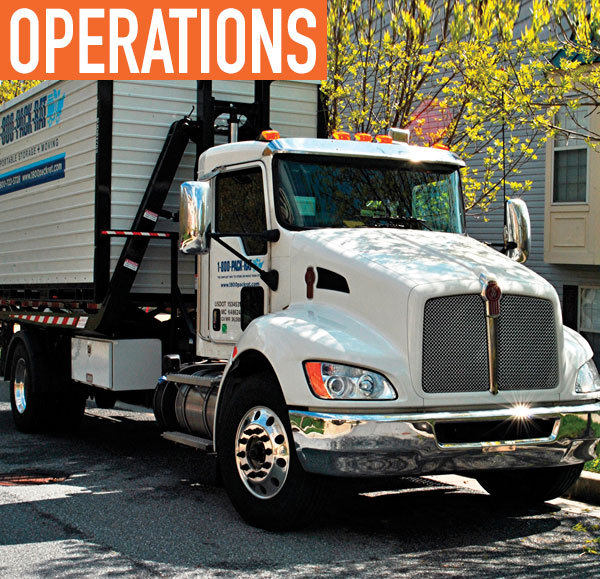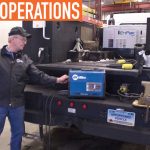Chances are, your work truck doesn’t come with everything you need to get the job done. As a fleet manager, you need an upfitter you can rely on for more than just a source of equipment. Upfitters provide a wide range of services, which vary from upfitter to upfitter. Before getting your trucks upfitted, assess your position. What do you need? Which upfitter would be the best fit with your circumstances, timetable, knowledge of how things need to be done, risks and hazards, budget, and service and equipment objectives?
Below are seven important criteria to consider when choosing an upfitter:
REGULATORY COMPLIANCE
Fresh-off-the-assembly-line pickups from vehicle manufacturing plants, such as Ford, are considered finished products. They go from the factory to dealers, from dealers to consumers or businesses. The pickups come with few, if any, modifications beyond the addition of gasoline and license plates.
In some cases, however, the end of the factory assembly line is an interim step in getting the pickup from manufacturer to customer. These “incomplete vehicles” may leave the factory with little more than an engine, chassis, and passenger cab. These trucks go to an upfitter, who completes the vehicle. It is the upfitter’s responsibility to certify the vehicle as being “complete” and compliant with all OEM and government regulations, explains Houston attorney Robert Ammons in the 2007 issue of Trial magazine. Not every upfitter is qualified to perform a completed vehicle certification.
Vehicle manufacturers provide upfitters with manuals explaining what they can and cannot do to a vehicle within the guidelines of the Federal Motor Vehicle Safety Standards (FMVSS). Sometimes referred to as “body builders’ books” or “best-practices manuals,” each OEM publishes documents articulating how a vehicle is to be modified, including a rundown of the vehicle’s component parts, such as fuel and exhaust systems. To some in the industry, a best-practices manual is considered “the single most important document” an upfitter can use in determining compliance with federal safety rules.
Components designed by another company, such as an aerial lift device, will have its own set of designs and drawings. In such cases, the upfitter must be sure to gather information from both the OEM and the equipment manufacturer(s). Only with all the information can the upfitter review the modifications performed to determine if the vehicle meets all criteria to be certified as complete. This requires engineering capabilities and diligent record keeping.
INDUSTRY AND VOCATION KNOWLEDGE
Every industry, every job, has ins-and-outs that people in the industry come to know over time and with experience. It’s best to work with an upfitter that knows yours. They can anticipate what you’re going to ask about, because they have already learned what works best and what issues tend to occur. Ask to see examples of similar upfits with similar challenges that compare to yours.
DESIGN AND ENGINEERING SERVICES
It’s imperative that you get a well thought-out design for your truck upfit. Tasks and issues have to be prioritized. It is important to understand the consequences of each design decision. A skillful designer or engineer will take a number of things into consideration to see potential safety or cost issues while still in the design phase, reducing rework. The ideal designer or engineer will anticipate multiple system failures and worst-case scenarios in order to determine appropriate backup safeguards.
PRODUCTS, TECHNOLOGIES, AND SERVICES
Upfitters can call upon a number of suppliers, or suggest comparable equipment, giving you options in the event of shipment delays due to weather, labor disputes, or shortages of raw materials. The ability to choose from several brands, styles, and materials gives you more control over cost and performance features. Your upfitter should be able to provide you with information on new technologies and how-to ideas which might benefit you.
COST SAVINGS IDEAS
An upfitter who wants your business for the long haul will work with you to value-engineer the truck you need. That doesn’t have to mean compromising quality, and certainly not safety, but rather taking the time to figure out how to make the most of every dollar you invest in each vehicle. An expert upfitter can work with you even before you make your truck selection, presenting all your options and giving you the benefit of their vehicle performance expertise. Purchasing from their pool can speed along the purchase-to-upfit process, putting you into service faster.
Additional cost-saving comes from purchasing “green” vehicles, which provide fuel savings by using alternative fuels/energies. Look to your distributor/upfitter to work with with you to evaluate which green innovations may make sense for your business or fleet.
SAFETY CONSIDERATIONS
Any modifications to a vehicle performed by an upfitter which may potentially create a hazard for the operator—or other nearby persons—should be cautiously considered. With new products being developed and updated constantly, drivers and operators need to know the proper way to use and maintain their equipment.
In the event of an accident, investigators will pursue the paper trail, looking for any design drawings for the completed vehicle. The upfitter should have detailed information about your upfit at the ready, including: drawings with a detailed layout of performed work, a list of added components, and OSHA compliance data. These documents are critical to understanding any equipment performance issues, failures, accidents, or injuries.
FLEET EVALUATION CRITERIA
Fleet managers are often put in place for budget and asset management skills rather than truck equipment know-how or field knowledge. Some fleet managers are even charged with overseeing multiple departments. With an imperative to maintain or reduce costs, fleet managers still have to provide excellent service to customers, insure a safe work environment, keep current on government regulations, assess new technologies, and now be “green.” The job of the fleet manager has become more complex and high profile.
Fleet managers need an ally they can depend on to help steer vehicle and equipment purchases in the right direction, systematize maintenance, and serve as the communications and engineering hub for the fleet. In reality, the truck upfitter may know more about a fleet vehicle than the corporate fleet manager does.
Larger fleets have specific procurement, maintenance, and replacement procedures that need to be followed, while all fleets have brand identity standards and complex and variable state or federal standards with which to comply. In addition, North America hosts 10 climate zones and varying geography, which greatly affect vehicles and equipment. For fleets that operate numerous types of vehicles, work across a large geographic area, and utilize special or complex equipment, a capable upfitter is an integral part of the team. ![]()
ABOUT THE AUTHOR:
Eric Schoenfeld serves as marketing director of Auto Truck Group LLC, a construction, material handling, and field service industry source for more than 85 years. Auto Truck is committed to providing equipment and services to help for fast, increased productivity. Find out more about Auto Truck at www.autotruck.com or contact Eric at eschoenfeld@autotruck.com.
_______________________________________________________________________
MODERN WORKTRUCK SOLUTIONS: DECEMBER 2015 ISSUE
Did you enjoy this article?
Subscribe to the FREE Digital Edition of Modern WorkTruck Solutions magazine.
![]()




